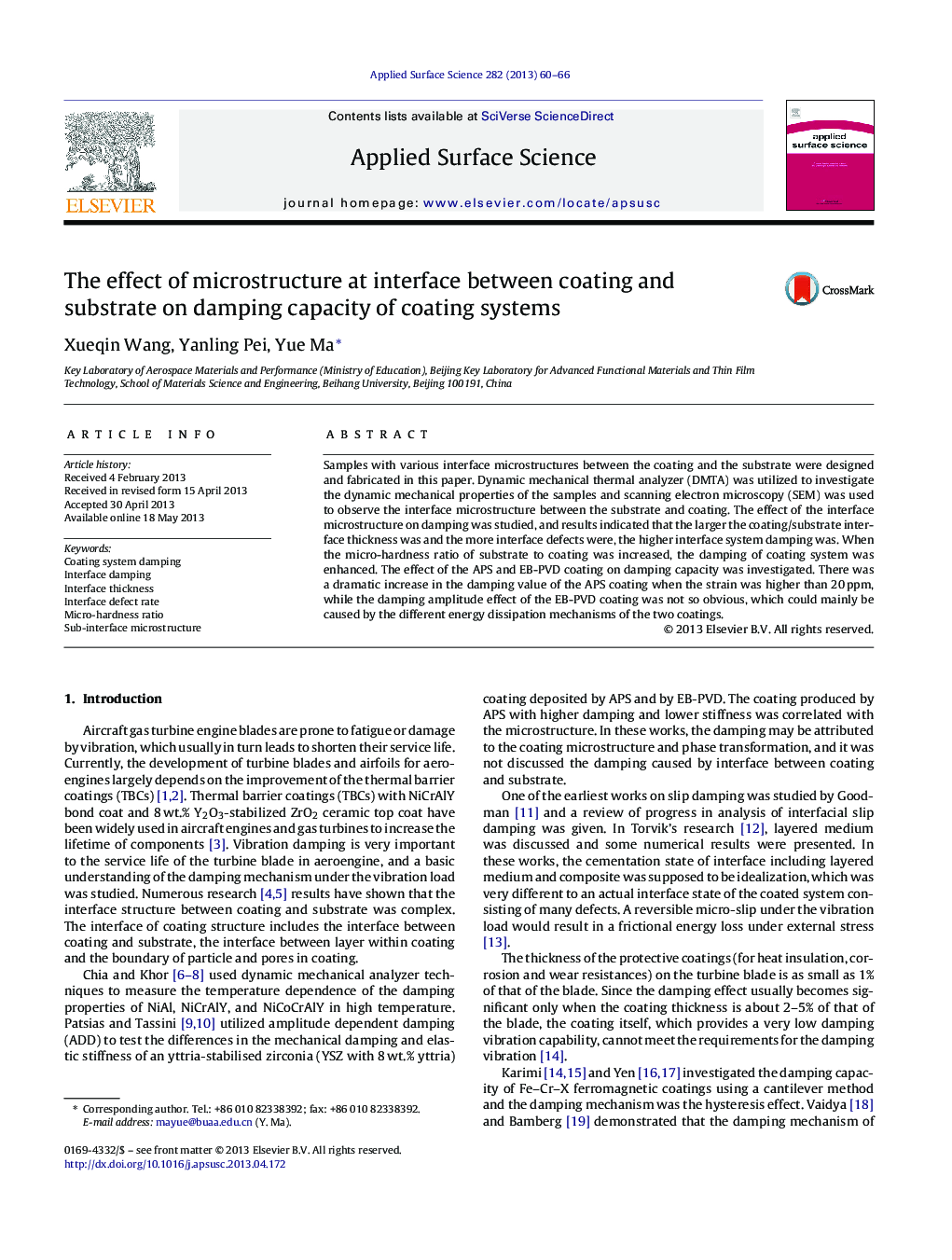| Article ID | Journal | Published Year | Pages | File Type |
|---|---|---|---|---|
| 5359667 | Applied Surface Science | 2013 | 7 Pages |
â¢The higher defect rate per unit thickness at the interface correlated with higher system damping.â¢Larger ratio of substrate hardness to coating hardness (HS/I/HC/I) at interface corresponded to greater system damping.â¢The damping of the APS and EB-PVD systems displayed distinct difference, which could result from the different microstructures of the two coatings and had nothing to do with the substrate.
Samples with various interface microstructures between the coating and the substrate were designed and fabricated in this paper. Dynamic mechanical thermal analyzer (DMTA) was utilized to investigate the dynamic mechanical properties of the samples and scanning electron microscopy (SEM) was used to observe the interface microstructure between the substrate and coating. The effect of the interface microstructure on damping was studied, and results indicated that the larger the coating/substrate interface thickness was and the more interface defects were, the higher interface system damping was. When the micro-hardness ratio of substrate to coating was increased, the damping of coating system was enhanced. The effect of the APS and EB-PVD coating on damping capacity was investigated. There was a dramatic increase in the damping value of the APS coating when the strain was higher than 20Â ppm, while the damping amplitude effect of the EB-PVD coating was not so obvious, which could mainly be caused by the different energy dissipation mechanisms of the two coatings.
